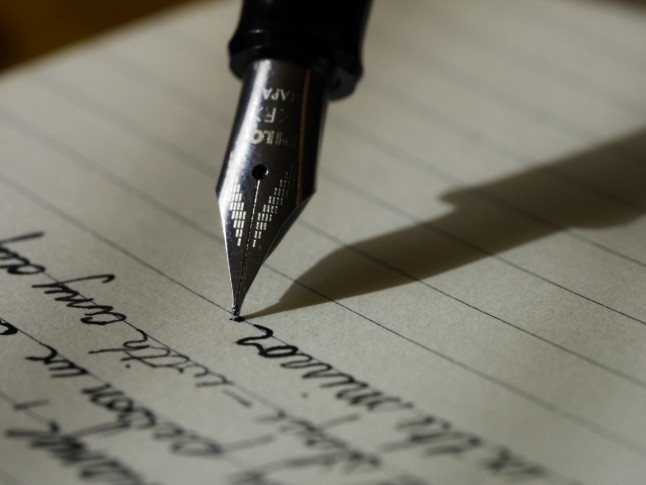
We’ve all been there. We’re chugging along, writing what we hope is brilliant prose on a new story, when BAM! We hit a wall. All of a sudden, the Muses have abandoned us and gone on vacation. We’re left staring at our screens, unsure where to go next.
Every writer gets stuck when writing, whether you’re penning short stories or novels. We can even get stuck when writing memoirs or personal essays (or – cough, cough – blog posts.) It’s not always writer’s block or a lack of motivation. Sometimes, it’s not even self-doubt. We just reach a point when we don’t know what comes next.
Often times, we know the ending of our story. We typically know the beginning. It’s that pesky middle that trips us up. We might even know that something major is going to happen. But the GPS lost signal, and we aren’t quite sure how to get there.
Fortunately, all hope is not lost. There are countless methods and strategies you can use to get your story back on track. Today, I’m highlighting a few of my favorites. These are all strategies that have worked for me and that I use regularly.
Method 1: Reread
This first method requires a detailed diagnosis of what is going wrong in your story. The first step to diagnosing your novel’s clogged artery is to reread what you have already written.
I’m a big believer that authors should not be waiting until the draft is complete to do a reread. I’m not suggesting you read your entire manuscript every day, either. We don’t have time for that.
Start by reading the previous two or three chapters. You might have found that you accidentally wrote yourself into a corner. It happens. Maybe you wrapped up a conflict too soon, or maybe there’s just not enough explanation for what needs to happen next. These are often simple fixes. Delete or add a couple of sentences, and you might have fixed the problem.
But that’s not always the case. If rereading those couple chapters doesn’t solve the problem, go back to the beginning and read everything you’ve written. Make some notes, but don’t put in any major edits. Read without judgment—this is an early draft, after all—but be honest about what is lacking.
Method 2: Back to the Drawing Board
Do you have an outline for your novel? If so, this method is going to be a lot easier for you. I like to say that I’m the “most plotting plotter who has ever plotted.” I’m also realistic and know this method won’t work for everyone! But it’s worth giving it a try.

One of the first steps I take is to create a timeline of the major events in my story. If you haven’t done this, I highly recommend you get a blank sheet of paper, draw a line, and create a timeline à la sixth-grade history class. If your story isn’t written chronologically, you can make a timeline in two ways. First, you can make the timeline chronological for your characters or world. Or you can create the timeline as you intend to write it.
At the very least, your timeline should have an inciting incident, a climax, and a resolution. Then you can fill in from there. Janice Hardy of Fiction University says there are nine big events to include when plotting your story. Tia Nevitt’s six-paragraph synopsis method recommends narrowing your book down to the six big events.
Whichever method you use, write your story’s big events down. As you look at these events, figure out how to get from Point A to Point B to Point C. These transitions are often where our stories get stuck.
Our stories also get stuck because of our characters. As you are looking at your outline, make sure that your character is growing. Also, make sure you have written in your character’s motivations clearly. What does your character want? What is keeping her from achieving it? What will happen if she fails?
In my critique group, we talk a lot about character motivations. When our stories aren’t flowing well, we ask each other about motivations. It comes up so often that it’s almost a joke. But the truth is: we usually need to spend more time making our character’s motivations clear. And it’s not just the motivation for the whole story. If you’re stuck on a scene, ask yourself what every character in that scene wants at that moment. You’ll be surprised by what your characters will tell you.
Method 3: Write the Fun Scenes
We all have scenes that we are excited to write. Maybe it’s an epic battle or when two characters finally get together. Maybe you have some witty banter planned. These are the scenes that we live for as writers.
Here’s a tip: You don’t have to write your story in order.
I struggle with this. I think linearly – that’s why the first thing I do when I start a novel is make a timeline. But there’s nothing wrong with jumping ahead a little bit. Getting stuck can make us feel unmotivated. Writing fun scenes make us excited.
Just this week, I reached a point where I was stuck. I knew that I had to show a magical training scene, but I had no clue what it was going to look like. I also knew that in a few chapters’ time, two of my characters were finally going to kiss! I’m a sucker for romance.
I jumped ahead and wrote the romantic scene. It took me two days to get that chapter finished. But then I was able to jump right back to the magical training. I still didn’t have a clear picture, but I was excited by my story again. My fingers just flew across the keyboard, and it led me to a character revelation I didn’t anticipate.
Method 4: Write Backward
On a similar note, there is nothing stopping you from writing backward. Chances are you have a good idea of your novel’s climax. Start there, or even start with the resolution. Write how you think it should go.
Then work backward. You’ve likely mentioned things that will need to be addressed in the chapters prior. What happens immediately before that big battle? What happens before that?
This is especially useful if you’ve struggled with leaving breadcrumbs for your readers. Writing a big reveal first then backtracking can make sure your clues are strong and well paced.
Method 5: Use Writing Prompts

It doesn’t matter whether you’re new to writing or you are a seasoned author of twenty books. Writing prompts are fun and useful. They can help breathe some new life into your story.
You don’t have to include your writing prompts in your story. Chances are it won’t fit. But starting with a blank page and looking at your plot or your stories with fresh eyes can help. You can discover something new and get excited again.
Here are a few writing prompts I’ve used when my stories get stuck:
- Describe your main character from the points-of-view of someone who loves them and someone who hates them
- Write the story of a character’s emotional wound
- Drop two of your characters into an alternate world (Harry Potter, Marvel Cinematic Universe, etc.). How do they respond?
- Create a dating profile for your character
- What is the worst thing that could happen at this point in your story? Write as if it happened.
- Write a folktale from your story’s world
Method 5: Walk Away
Sometimes the best thing we can do for a stuck story is to walk away. But don’t just do something mindless so that you can stew on the issue. Put your story out of your mind.
Exercise can be a great way to get your creative juices flowing. You can also read or take a nap to reset. But the thing that almost always works for me is to do something else creative.
If you’re into visual arts, go create! Sculpt, paint, draw. Keep using your creativity. Do you play an instrument? Go practice for an hour.
But maybe you’re like me. I am not musically-inclined. I am also not good at any sort of visual media. I have taken up soap-making as my other creative hobby. Playing with scents and colors is a lot of fun. Here are some other creative options.
- Cooking! Try a new recipe or start experimenting.
- Coloring books
- Dancing
- A BYOB art class
You can also write something else. I’m lucky that I always have plenty to write for my freelance writing jobs. It gets me in the mood for my fiction. But you can write anything when your story gets stuck. Write a poem or some flash fiction in a totally new genre. Work on another story if you have more than one work-in-progress. Draft a blog post. Write a letter or email to someone you haven’t talked to in a while.
Method 6: Send It to a Critique Partner
If all else fails and your story is still stuck, you might want a fresh pair of eyes. Stepping away from your story can be really useful, too. I challenge you to send your imperfect, unfinished draft to someone you trust—and not look at your story until you get it back.
If you don’t have a critique group, find a critique partner in an in-person or online writing community. They also don’t have to be a writer. Get a trusted friend or family member to be your alpha reader. I highly recommend drafting a quick non-disclosure agreement for anyone who reads your unpublished work to sign.
If you’re in a financial position to do so, consider hiring a developmental or substantive editor. They are trained to help unstick stories. They know how to identify the common problems that are making you stuck.
The most important thing to remember is not to give up when your story gets stuck. The only story that can’t be fixed is an unwritten one.

